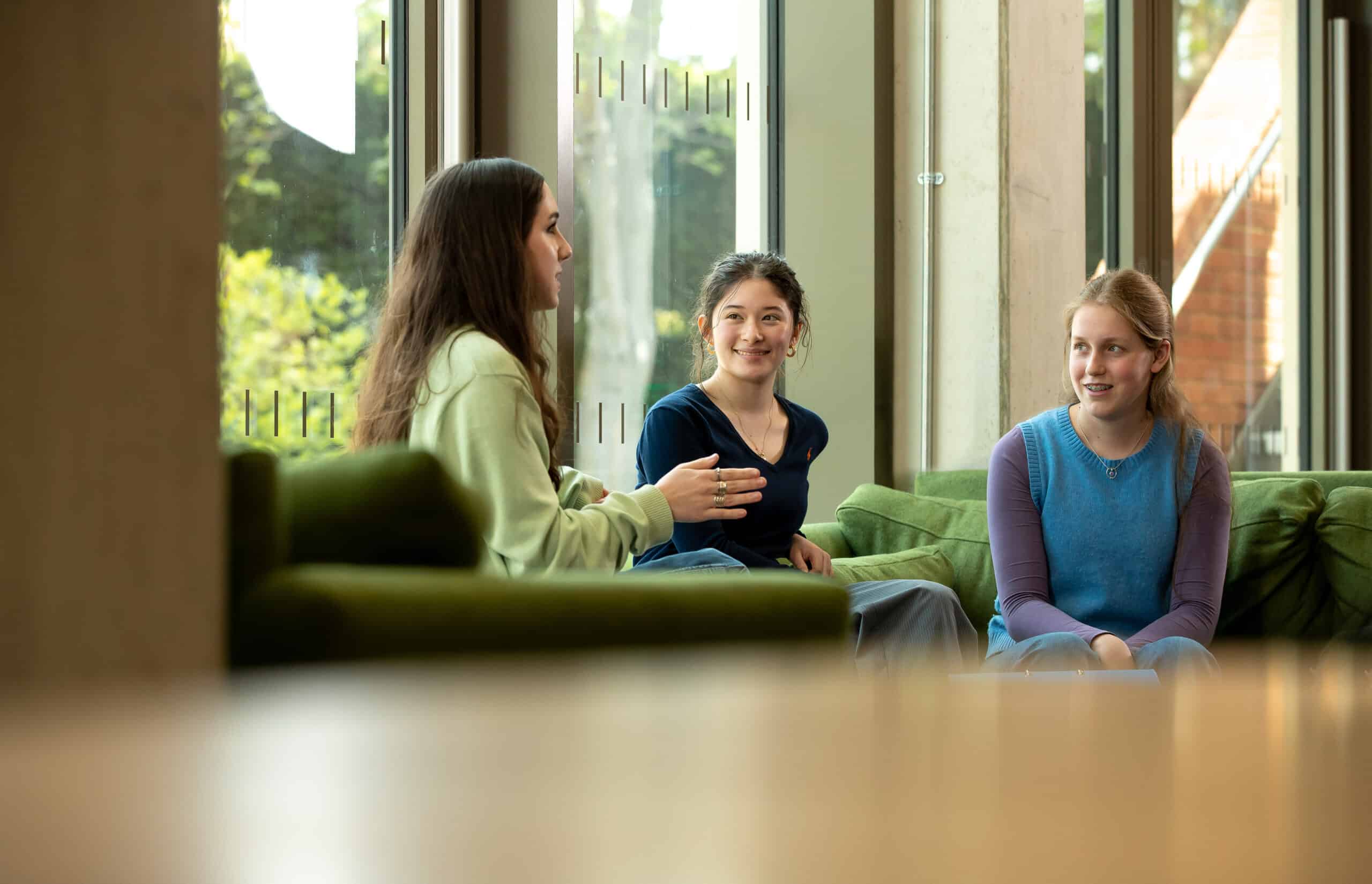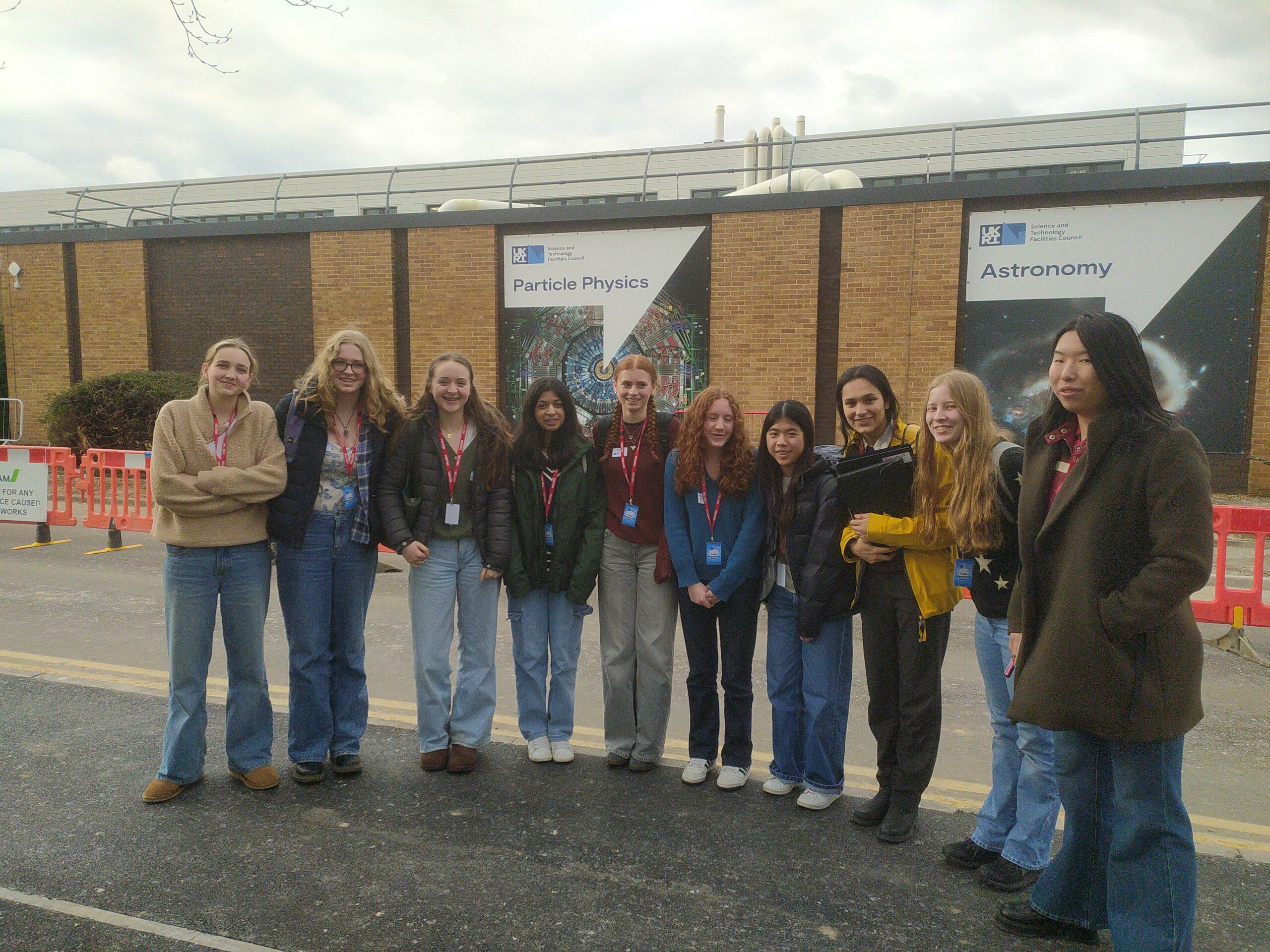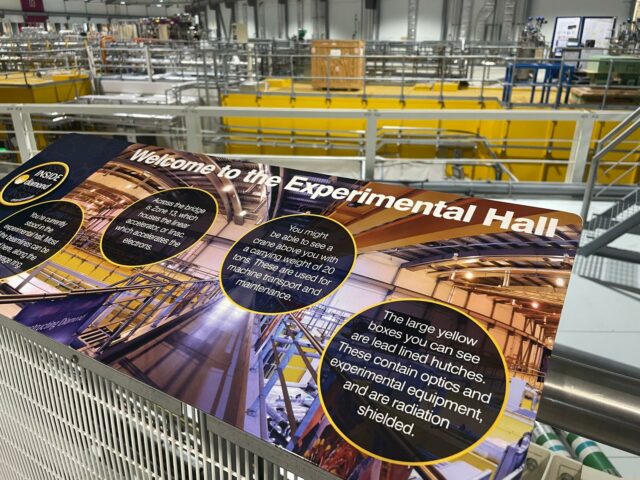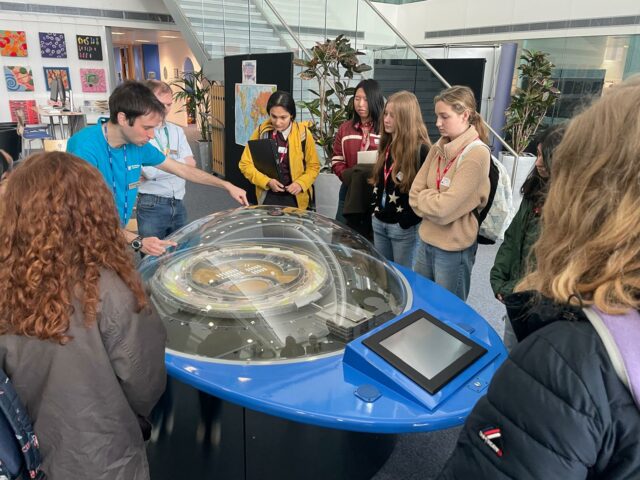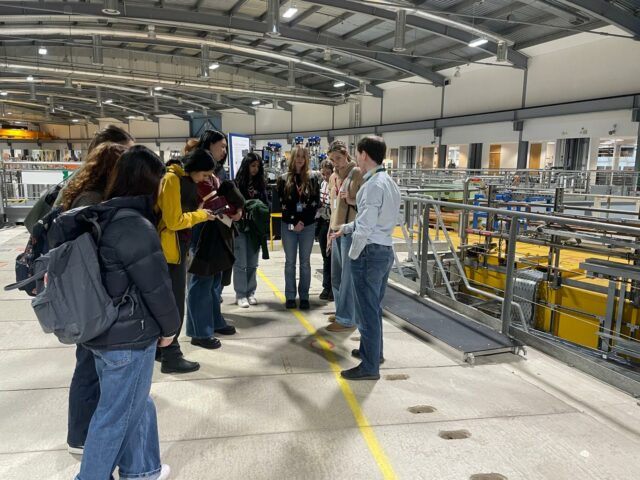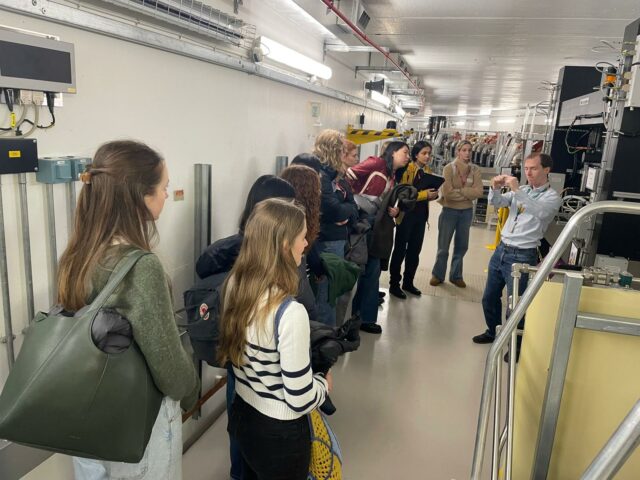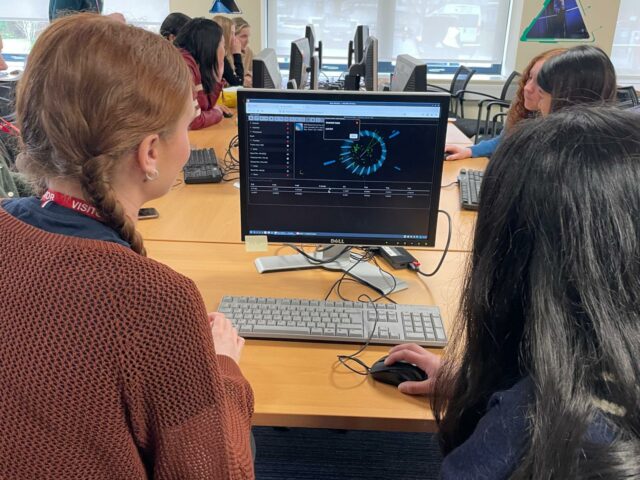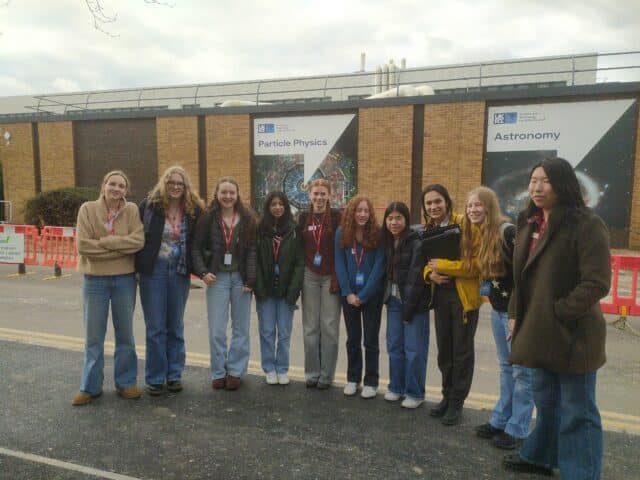The day began by putting into context the recent history of Particle Physics, with a fascinating talk explaining the history of particle colliders; from the early models of the 1930s (a modest 80 kilo electronVolts), to the 3 Giga electronVolt collider at Diamond Light Source today.
This was followed by an introduction to particle physics and the standard model. This talk introduced me to a new figure: Emmy Noether, a leading mathematician of her time, who created the theorem that stated that a symmetry corresponds to a conservation law, and who went on to help explain the intricacies of particle interactions.
It was then onwards to see the actual particle accelerator: a donut shaped ring more than 700m in circumference, perched on a single slab of concrete to compensate for any ground vibrations from the nearby A34. The machine was turned off and we were actually able to look at the beam lines, where, under normal circumstance, the particles would be whizzing around at almost the speed of light.
We learnt there are three types of custom-made magnets that focus the electrons orbiting in the cyclotron, allowing it to produce high power X-rays for scientific experiments. We also saw the smaller ‘linac’ accelerator that brings the particles up to speed, and the ‘huts’ where the X-rays are siphoned off the main beamline and used for a huge variety of experiments.
After lunch, we were introduced to the database used by CERN called The Grid, where data on exabyte scales are recorded and analysed for evidence of lurking new particles. We continued on to a computer workshop, where we had the privilege of looking through some models of the data and trying to identify particles produced in the interactions: differentiating between lighter charged particles and heavier particles like the Higg’s and Z bosons that are produced.
It was a day that really brought our recent topic to life; physics is incredible!







